15 Most Beautiful Types Of Roses: Blooms Of Elegance

Roses reign supreme as nature's ultimate expression of beauty, capturing hearts worldwide with their timeless elegance and enchanting fragrance. Their velvety petals, arranged in intricate layers, boast a mesmerizing array of colors, from passionate reds to delicate pinks, pure whites, and sunny yellows, each hue imbuing the flower with its own unique charm. Some roses boast perfectly symmetrical blooms, while others display a more natural, wild beauty with loosely formed petals.
Beyond their aesthetic appeal, roses hold immense cultural significance, symbolizing love, passion, and admiration across centuries and civilizations. Whether adorning gardens, bouquets, or cherished gifts, roses have become an enduring emblem of affection and beauty, transcending borders and languages to unite people in admiration of nature's most beloved bloom.
1. Blue Rose
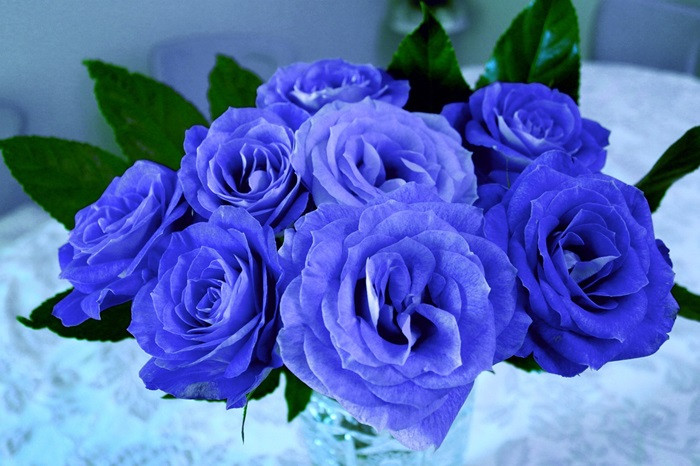
Blue roses are the rarest color of rose, commanding a higher price than other hues due to their uniqueness. Blue roses, belonging to the genus Rosa in the family Rosaceae, exhibit blue-to-violet pigmentation instead of the more common red, white, or yellow. They are often imbued with symbolism, representing mystery or the unattainable, as they do not naturally occur due to genetic constraints. In 2002, scientists utilized genetic modification techniques to introduce the blue pigment delphinidin into roses. While so-called "blue roses" have been bred through conventional hybridization methods, such as the "Blue Moon" variety, their color is more accurately described as lilac.
2. Juliet Rose
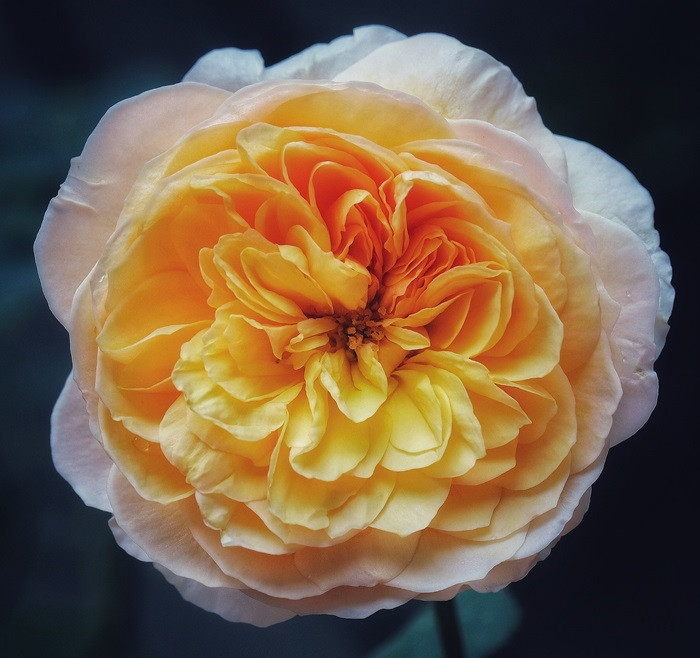
The Juliet Rose stands as not only one of the rarest flowers globally but also holds the title of the rarest rose, requiring 15 years of meticulous cultivation by rose breeder David Austin in England. Renowned for its breathtaking beauty and exclusivity, the Juliet Rose is considered the most expensive flower worldwide. With its captivating apricot hue and delightful peachy fragrance, this shrub boasts exceptional health and vigor, displaying remarkable resistance to diseases.
3. Alba
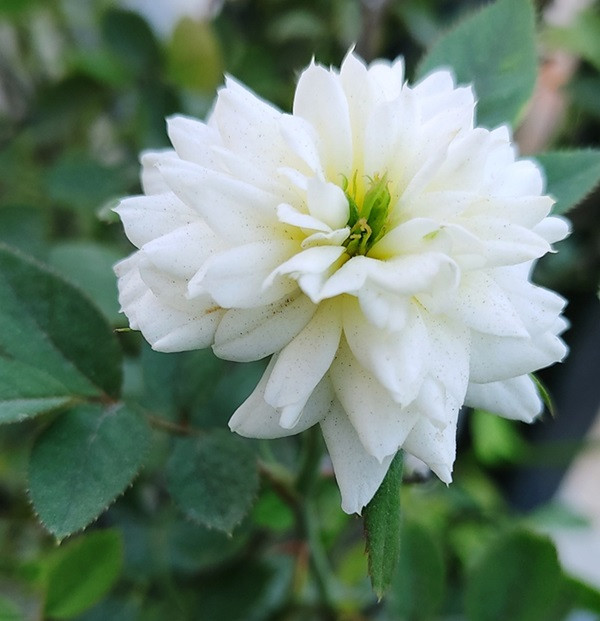
The White Rose of York, a hybrid rose with mysterious parentage, has been cultivated in Europe since ancient times. Blooming exclusively in mid-summer, these roses exhibit remarkable cold hardiness and resistance to diseases, making them ideal for breeding new varieties suited to subarctic climates like those of northern Scandinavia and Canada. Initially prized for the sweet scent of their flowers, they have now found further utility as robust garden shrubs that thrive even in winter conditions.
4. Gold Medal
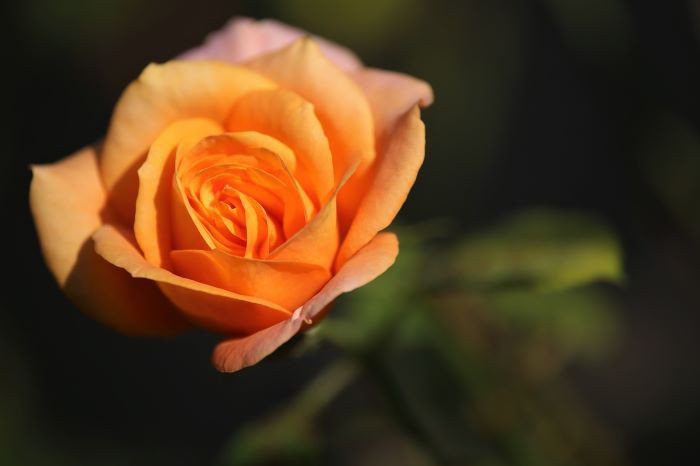
Golden-yellow with copper shading, aging to cream, this rose boasts a mild, fruity, spice, tea fragrance. Its large, full blooms, with 26-40 petals, are mostly solitary and cluster-flowered, arranged in small clusters, featuring a classic hybrid tea form, high-centered to cupped and reflexed. It blooms in flushes throughout the season, with medium, long sepals on buds. Hardy and heat-tolerant, this variety exhibits exceptional disease resistance, making it a reliable choice for gardens.
5. Black Baccara
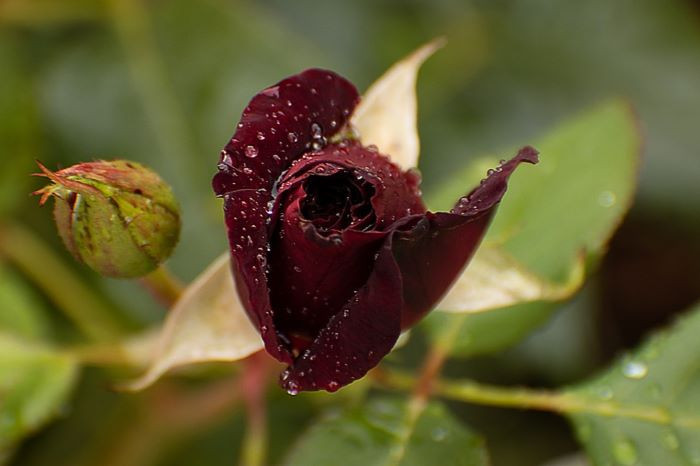
Rosa 'Black Baccara' is a stunning dark burgundy hybrid tea rose cultivar, created by French rose hybridizer Jacques Mouchotte prior to 2000. It was later introduced to America by Star Roses and Plants/Conard-Pyle in 2002. These roses exhibit a deep red-burgundy hue with a velvety texture, typically borne mostly solitary on robust, thick stems, and they bloom in flushes from spring to fall. While the flowers themselves have little to no fragrance, the foliage is characterized by its dark green glossy appearance. 'Black Baccara' is particularly well-suited for container planting, adding elegance and allure to any space.
6. Winchester Cathedral
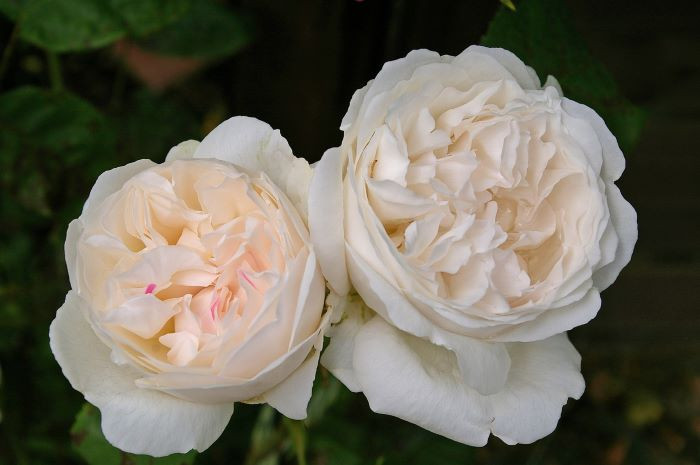
A white sport of 'Mary Rose', occasionally tinged with pink, this variety yields a profusion of medium-sized, loosely petalled, fragrant rosettes that continue to bloom persistently. Its strong clove fragrance accompanies an abundance of flowers throughout the entire season, while its upright, bushy growth habit ensures robust health and vitality.
7. Damask

Also known as Iranian Rose, Bulgarian rose, Turkish rose, or Arab rose, this ancient group is said to have been originally brought from the Middle East by the Crusaders. They typically exhibit elegant growth, boasting finely cut foliage and flowers held in open, airy bunches. Nearly all of these varieties are fragrant, serving as the source of attar of roses, a key ingredient in perfumes. Many species, notably the rugosa rose, yield edible rose hips, prized for their richness in vitamin C and occasionally utilized in preserves.
8. Miniature
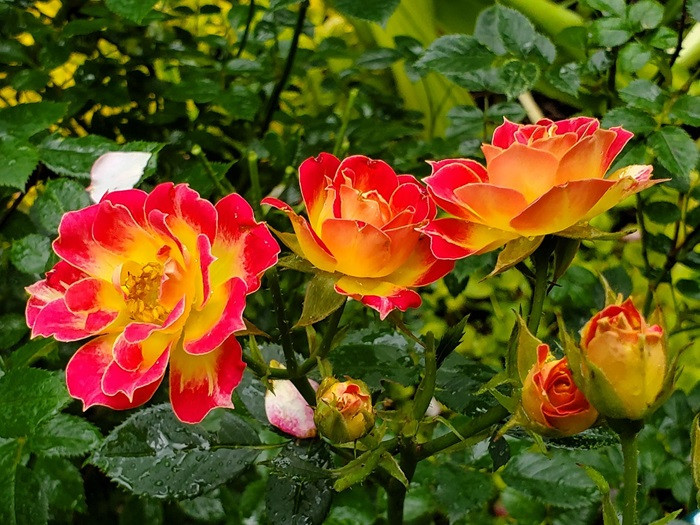
Miniature roses exhibit a reasonably quick growth rate and are ideal for planting along garden edges or in borders. True roses intentionally bred to remain modest in size, they are extremely hardy. Propagated on their own roots rather than grafted onto rootstock, they boast exceptional winter hardiness and tend to bloom profusely and repeatedly.
9. Hybrid Tea

Hybrid tea roses represent the oldest class of modern garden roses. Originating in France in the mid-1800s, they emerged from the cross-breeding of the large, floriferous hybrid perpetuals with the tall, graceful tea roses. The official recognition of hybrid teas as a distinct class occurred in 1879 when British rose breeder Henry Bennett introduced ten "Pedigree Hybrids of the Tea Rose" in Stapleford, Wiltshire. Characterized by long, elegant pointed buds that unfurl gradually, hybrid teas showcase a high-centered bloom form, often borne singly or accompanied by several side buds.
10. Eden Red

A light pink and white climbing rose, 'Pierre de Ronsard' was created by Marie-Louise Meilland and introduced in France by Meilland International in 1985 as part of the Renaissance collection. Named after the French Renaissance poet Pierre de Ronsard, in reference to his famous ode that begins with "Mignonne, allons voir si la rose", it was introduced during the 400th death anniversary celebrations of the poet. In 2006, it was honored as the 'World's Favourite Rose', and was inducted into the Rose Hall of Fame.
11. Rhapsody
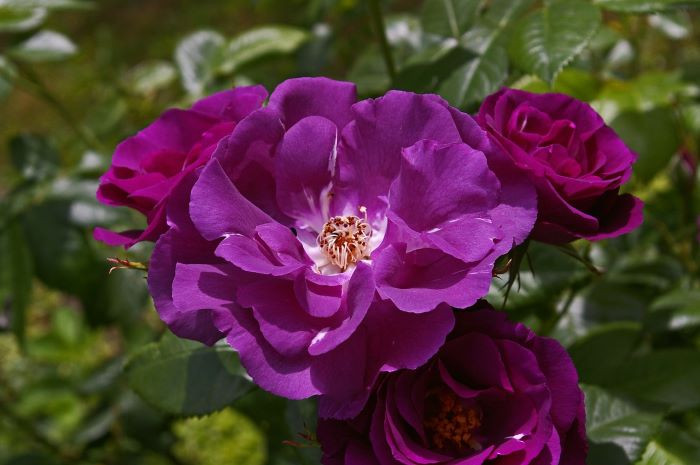
The sweetly fragrant, semi-double flowers of this rose exhibit deep purple-magenta tones that gradually fade to a slate mauve, making it arguably the closest yet to a blue rose. It grows into a tall, bushy shrub, with an upright growth habit, bearing clusters of semi-double blooms that open to reveal a radiant center of golden yellow stamens.
12. Queen Elizabeth

This variety is immensely popular worldwide. Bred by rose grower Dr. Walter Lammerts in the United States, it was named in honor of Queen Elizabeth II upon her ascension to the British throne in 1952. The flowers form large, open clusters of 3–15 and emit a moderate, sweet fragrance. They boast a high-centered to cupped bloom form, with pointed buds.
13. Double Delight
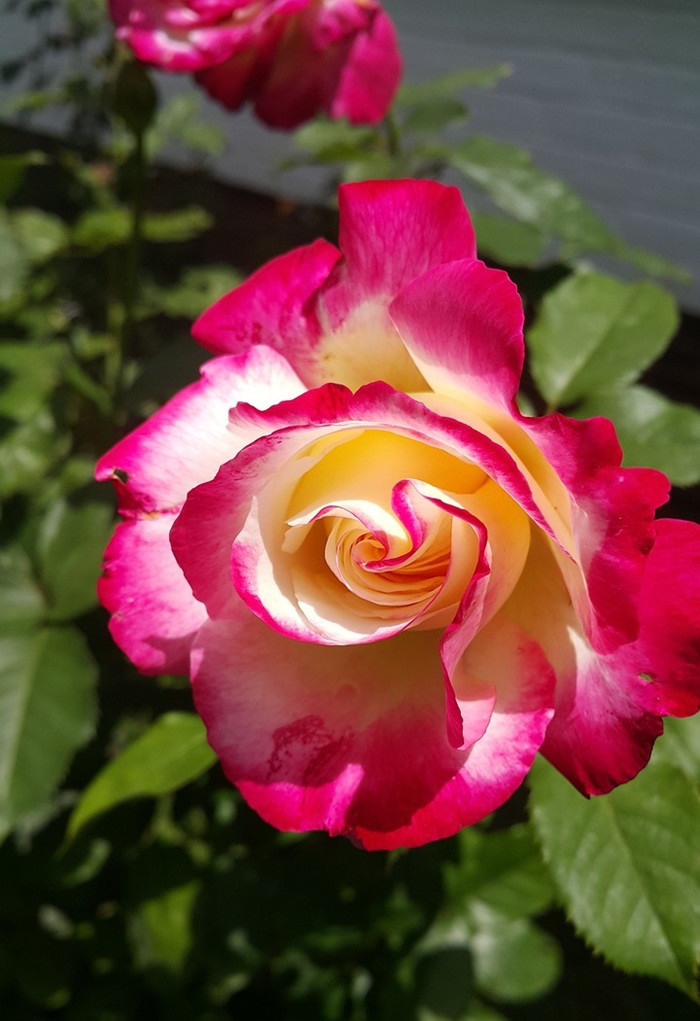
An all-time favorite, Double Delight captivates with its double blooms boasting an eye-catching color combination and robust fragrance. Each bloom, composed of 24-30 petals, exudes a rich, creamy white hue with striking strawberry-red edges. Its coloring and bloom size reach their peak beauty during warm days and cooler evenings, adding a touch of elegance to any garden.
14. Floribunda
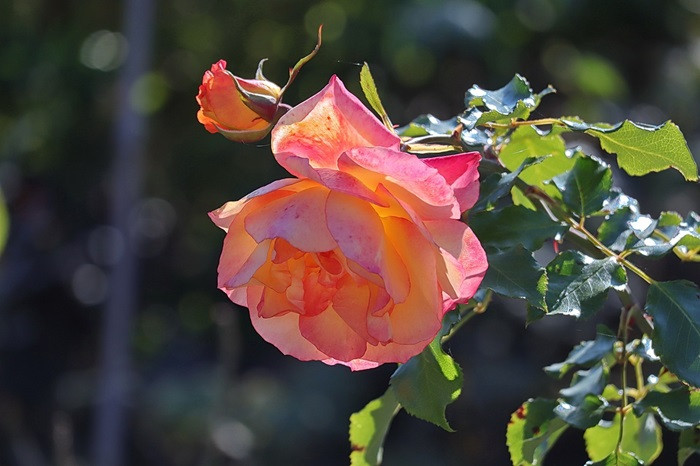
Floribunda roses represent a modern group of garden roses, crafted through the crossing of hybrid teas with polyantha roses. This innovative approach aimed to combine the profuse blooming characteristic of polyanthas with the exquisite floral beauty and diverse color range of hybrid teas. The term "Floribunda" is Latin for "many-flowering", indicating their prolific blooming habit. These roses typically grow into a bushy shape reaching heights of 3 to 4 feet and bloom abundantly during the summer months.
15. Victor Hugo
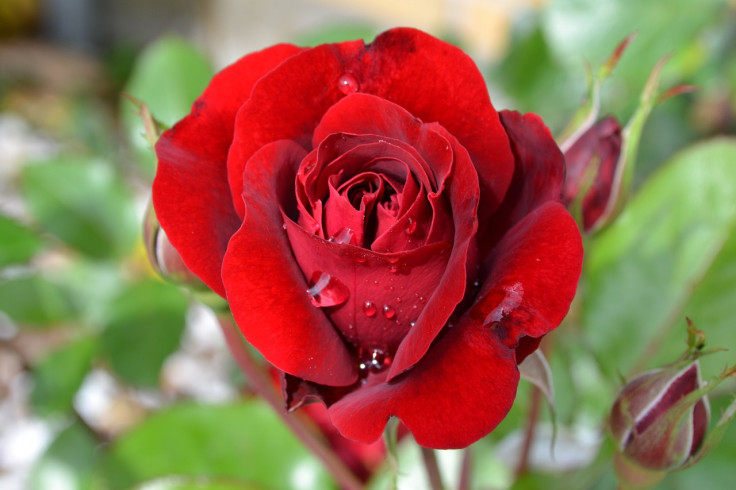
Victor Hugo roses, a Hybrid Tea variety, showcase dark red blooms with a strong fragrance, boasting 26 petals and a large bloom form. Blooming in flushes throughout the season, their upright habit highlights their striking dark red color and long-lasting blooms. Named in homage to the renowned French in the nineteenth century, the velvety red and highly perfumed blooms of this bush hybrid tea, bred by Meilland in France in 1985 for the centenary of Hugo's death, reflect the same captivating characteristics.
Enchanting blossoms
Roses offer not only aesthetic beauty but also a multitude of practical uses. From enhancing gardens and landscapes to adorning bouquets and floral arrangements, roses bring joy and elegance to countless occasions and celebrations. Furthermore, their petals and hips are utilized in various culinary, medicinal, and cosmetic applications, enriching our lives with their fragrance and beneficial properties. As symbols of love, passion, and timeless beauty, roses continue to inspire and enchant, leaving an indelible mark on our hearts and cultures across the globe.
© Copyright IBTimes 2024. All rights reserved.





















